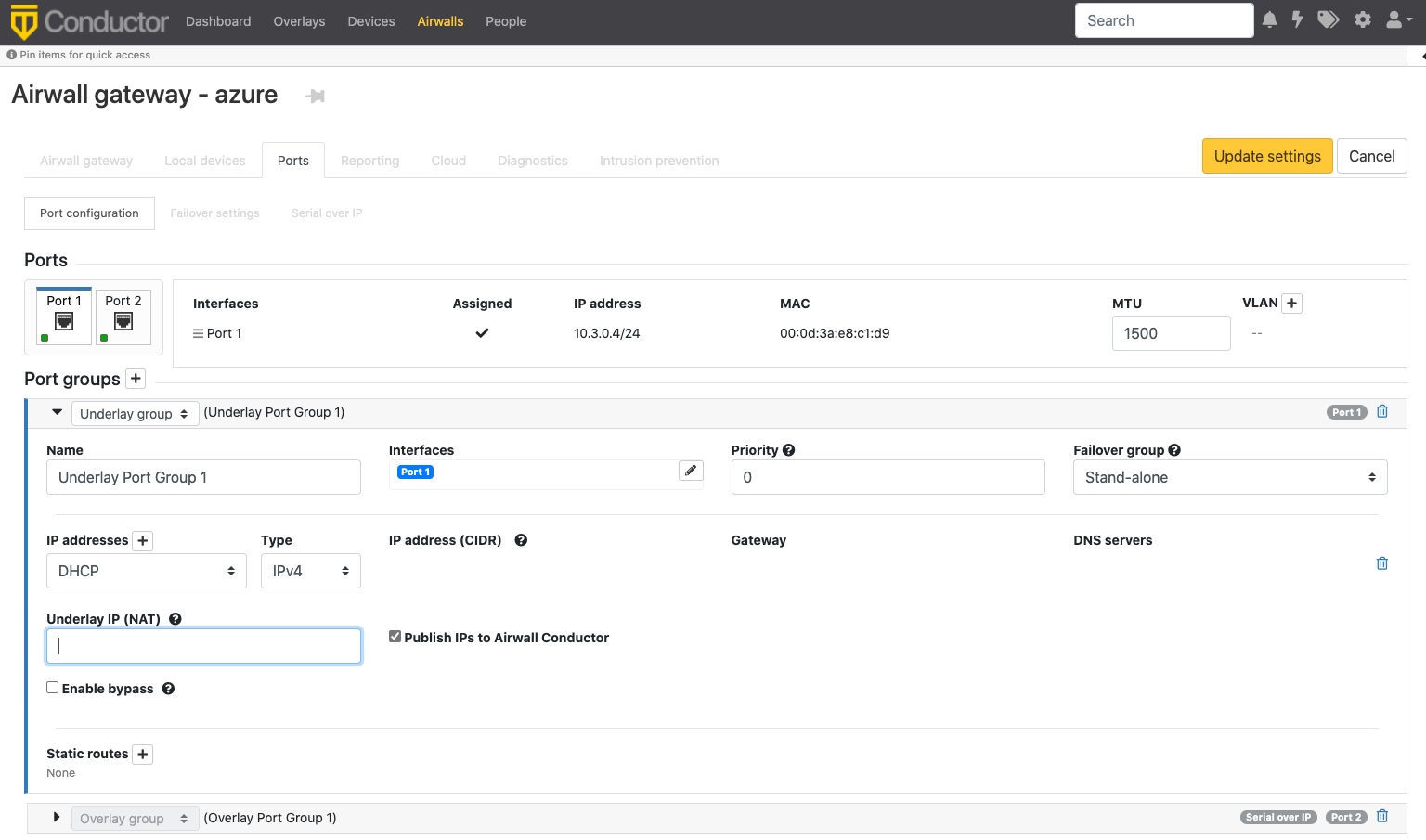Restore an Azure Cloud Airwall Gateway
If you've backed up your Azure Cloud Airwall Gateway by creating a snapshot, this is how you restore it.
- Create a new Azure resource group to store the restored Cloud Airwall Gateway.
- In that resource group, create a Managed disk object that uses the Snapshot from your existing Airwall Gateway as the source.
-
Next to Size, select Change size,
and change the Storage type and
Size of the disk based on your requirements by
selecting a disk size, and then selecting Ok.
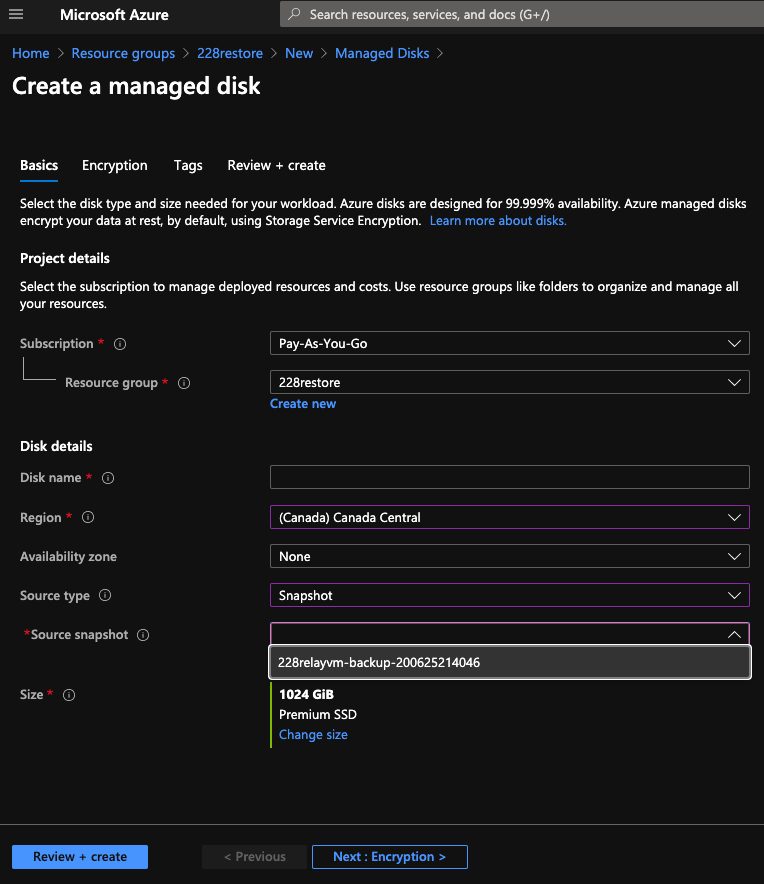
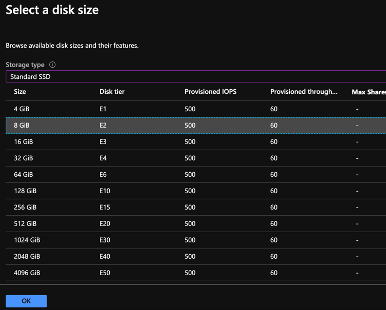
- Make sure the resource group and the managed disk are in the same region as the original Airwall Gateway.
- From the Azure Marketplace, start creating a new Managed Airwall Gateway.
- Select your new resource group as the destination and continue to fill out the form as you would a normal deployment.
-
Rather than finalizing the deployment, on the final screen, select
Download a Template for Automation instead.
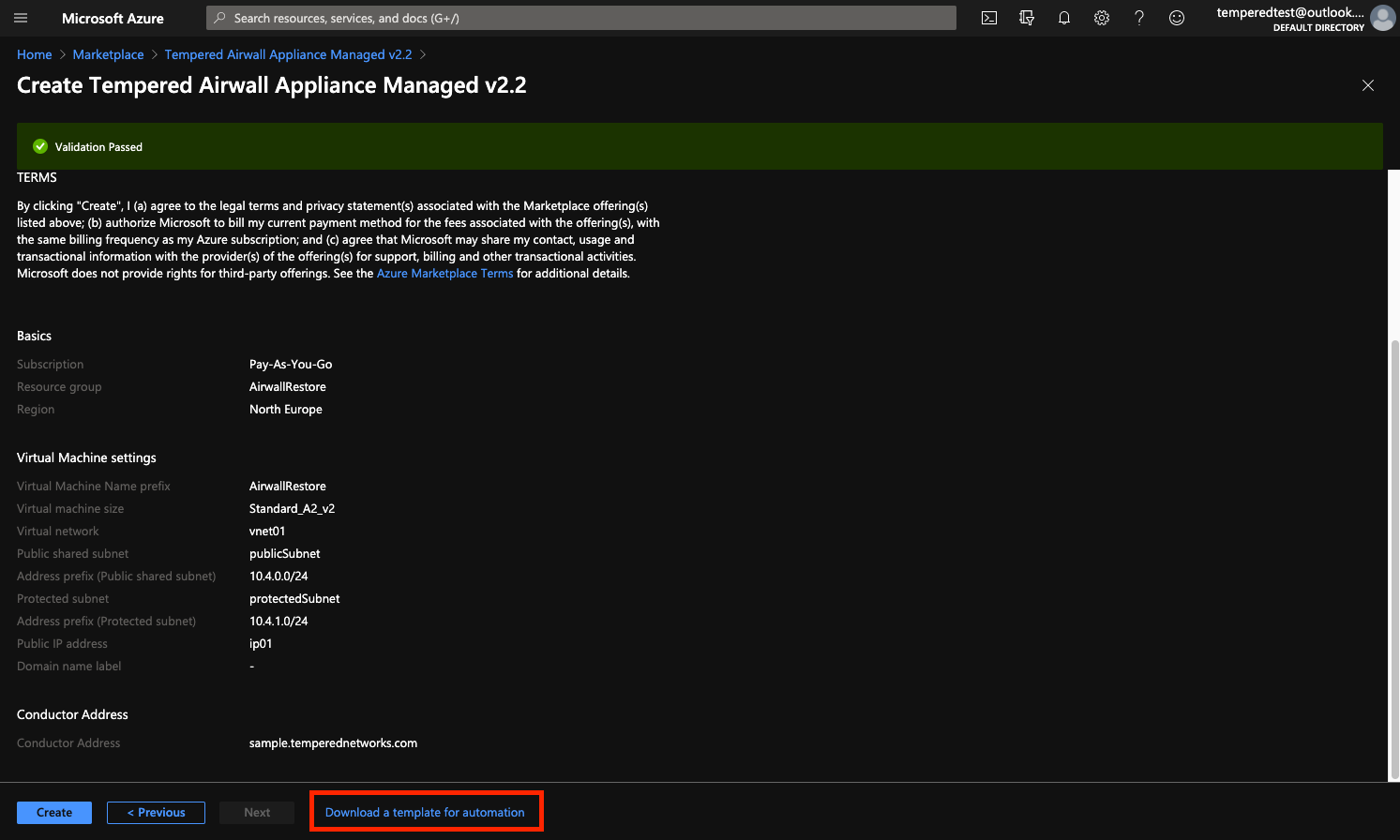
- On the next screen, click the Download link in the upper left. You should get a .zip file with two .json files.
-
Unzip the files, and modify the template.json file as follows:
-
Create a new Azure Template.
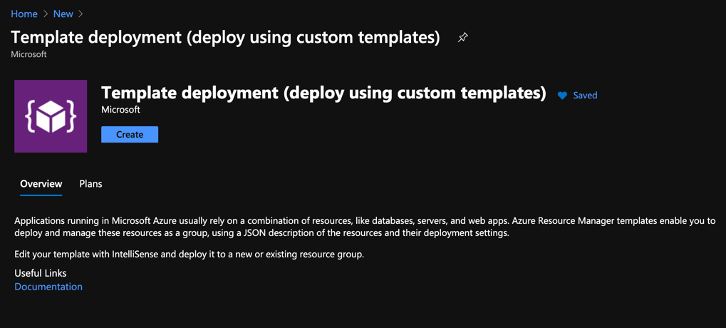
-
Select Build your own template in the editor, and copy
the contents of template.json into the text field, and then select
Save.
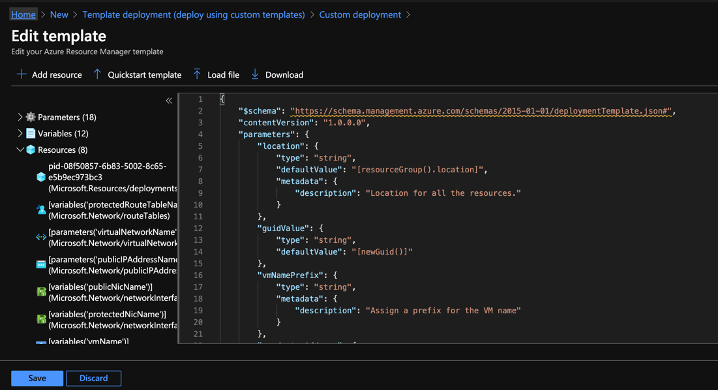
-
Select the Edit parameters at the top of the form and
paste the contents of parameters.json into the displayed field and select
Save.
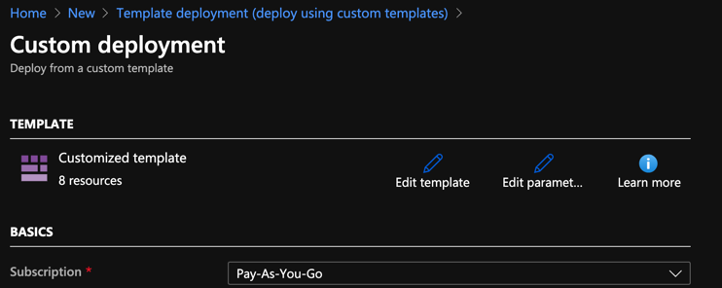
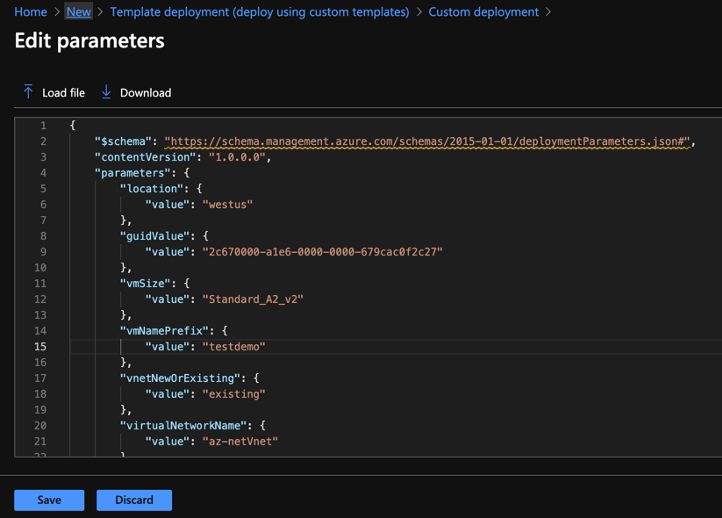
- Finalize the deployment and wait for it to complete.
-
Once the restored Airwall Gateway is
deployed and communicating with Conductor,
open that Airwall Gateway in
the Conductor, and on the Ports
tab, update the Underlay NAT IP to match the new static
IP object from the deployment.
